Integrating observations and measurements from Parker Solar Probe, Solar Orbiter, and other space- and ground-based observatories
The launch of Parker Solar Probe (PSP) in 2018, followed by Solar Orbiter (SO) in February 2020, has opened a new window in the exploration of solar magnetic activity and the origin of the heliosphere. These missions, together with other space observatories dedicated to solar observations, such as the Solar Dynamics Observatory, Hinode, IRIS, STEREO, and SOHO, with complementary in situ observations from WIND and ACE, and ground based multi-wavelength observations including the DKIST observatory that has just seen first light, promise to revolutionize our understanding of the solar atmosphere and of solar activity, from the generation and emergence of the Sun’s magnetic field to the creation of the solar wind and the acceleration of solar energetic particles.
PSP E8 observing campaign
April 24 - May 8, 2021
Magnetic connections for PSP, Solar Orbiter and 1au in support of the WHPI campaign. Modeling results will be updated regularly.
Current predictions, actual positions and magnetic connections for PSP Encounter 8
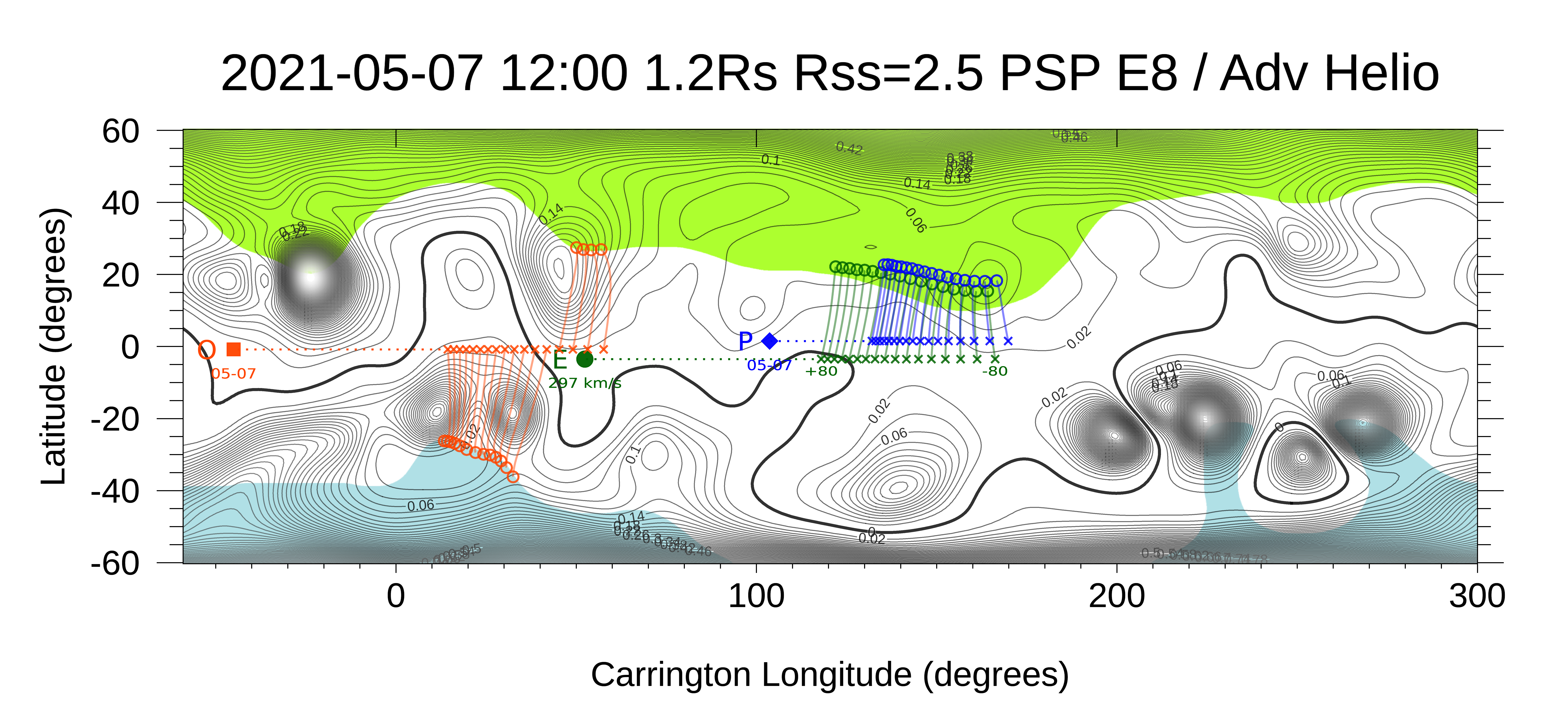
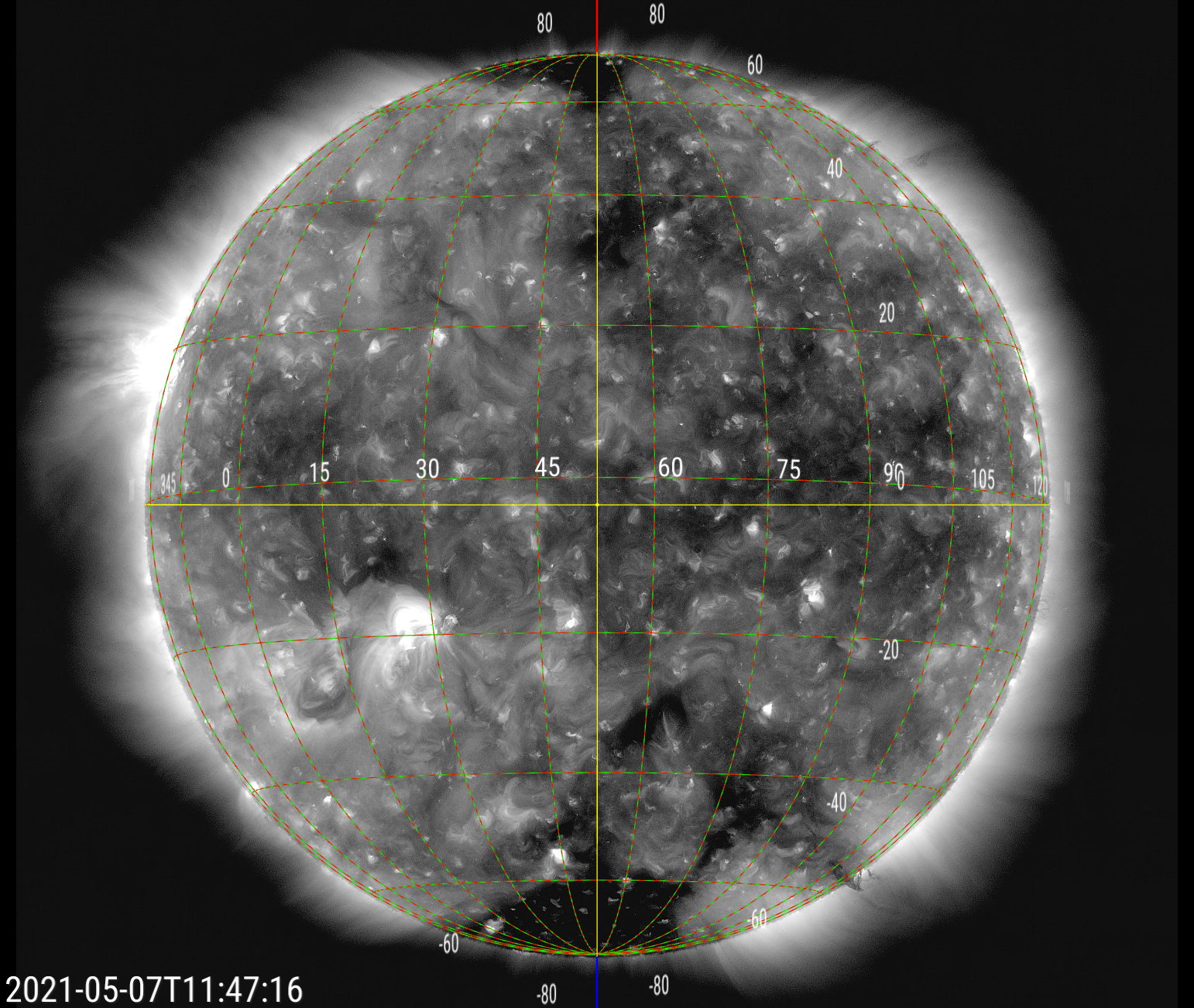


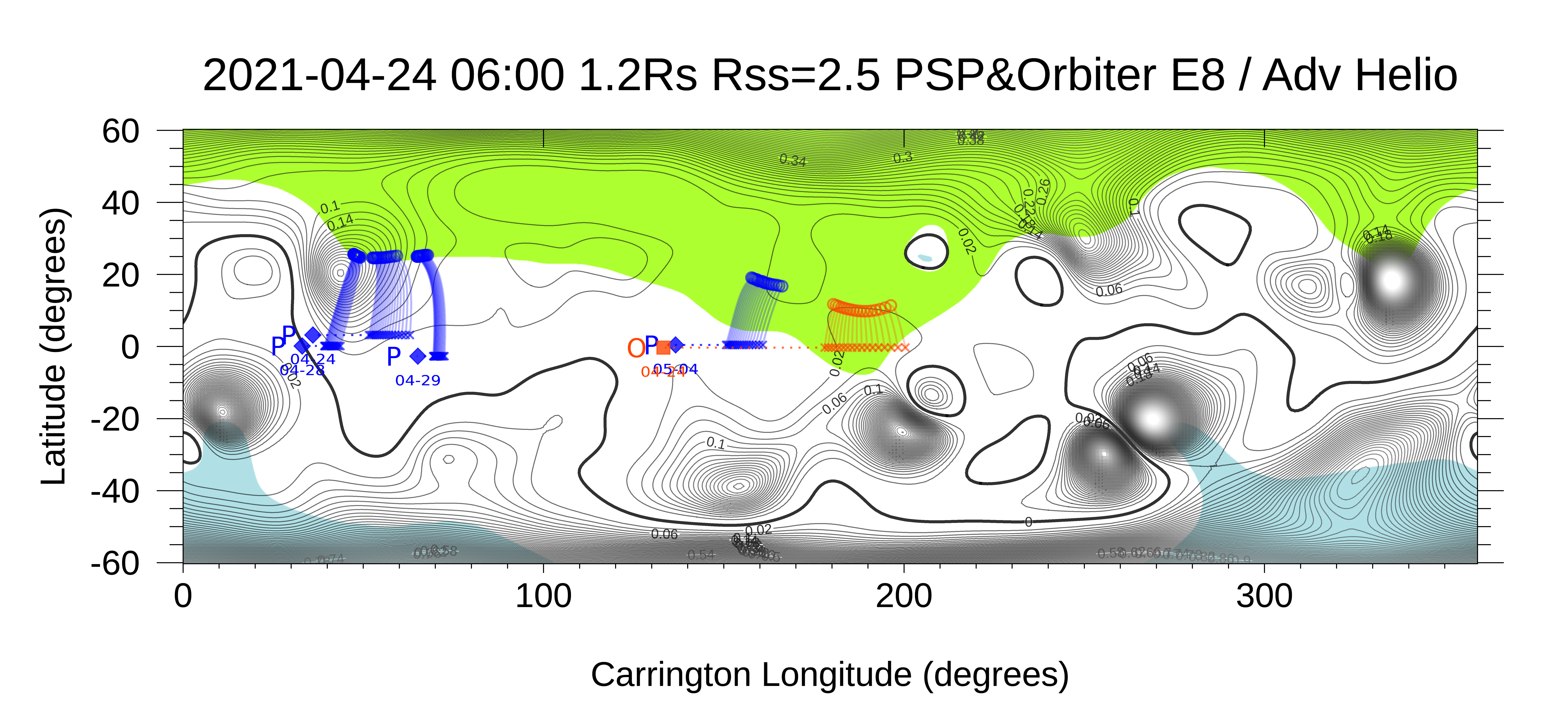
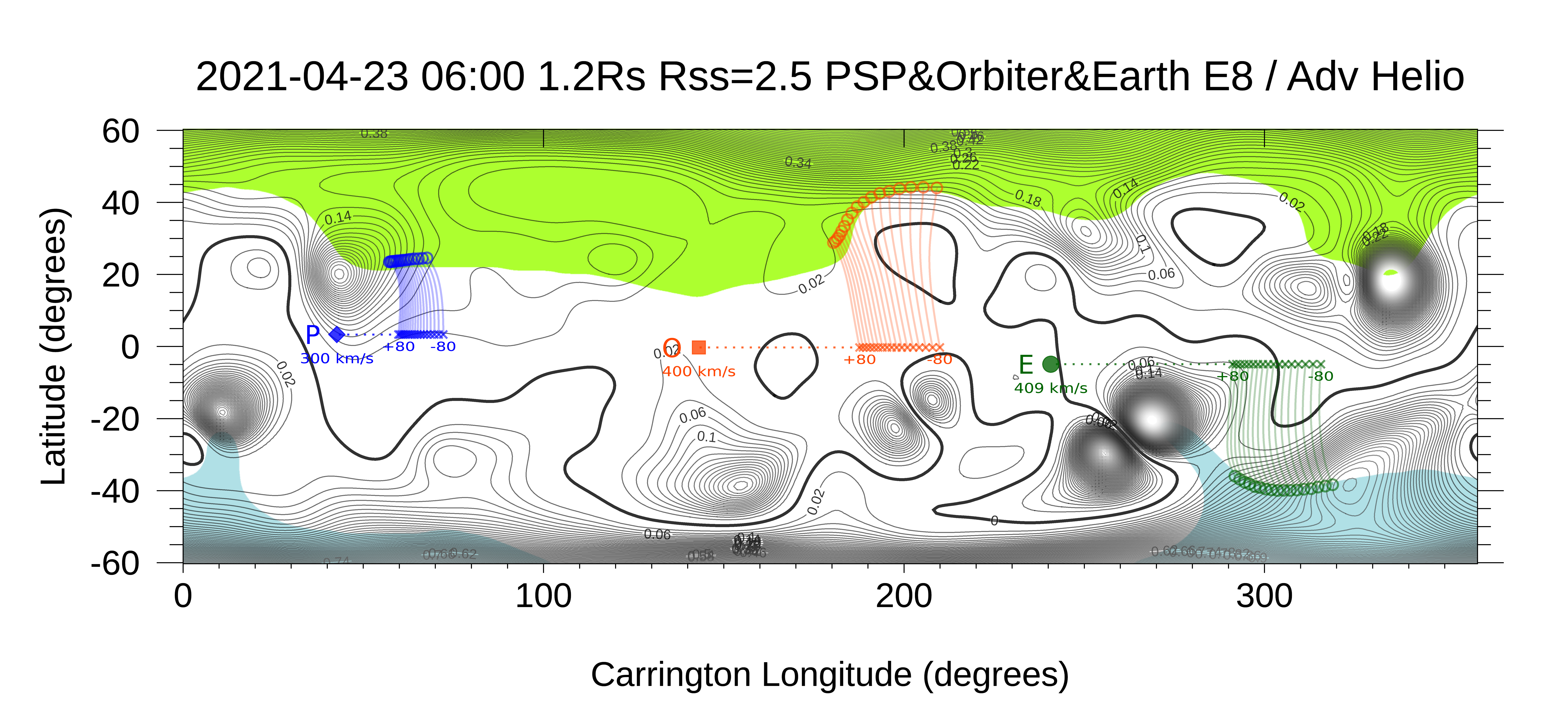
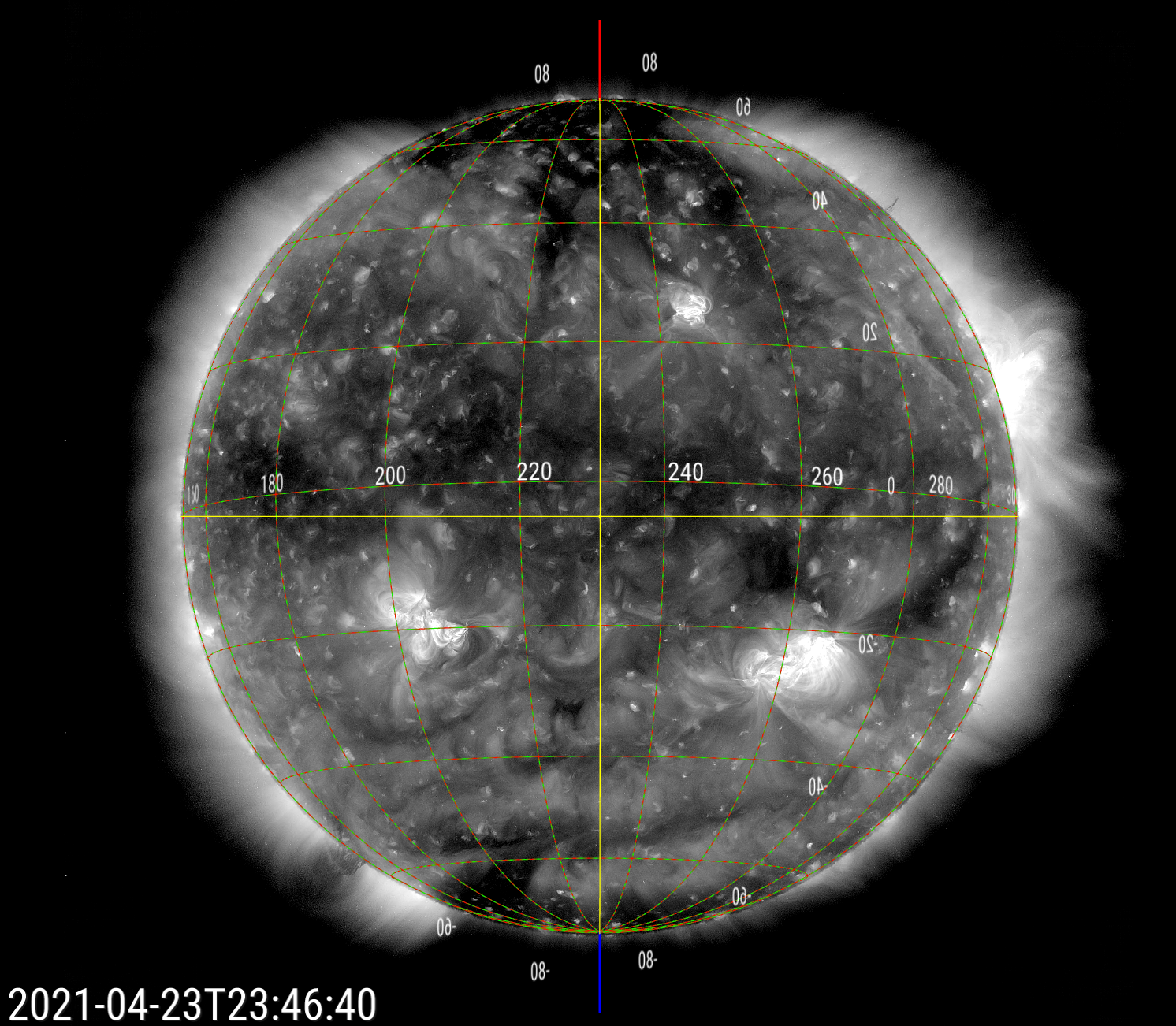
Earlier predictions for PSP Encounter 8
Synergies between PSP, Solar Orbiter and 1 au observations
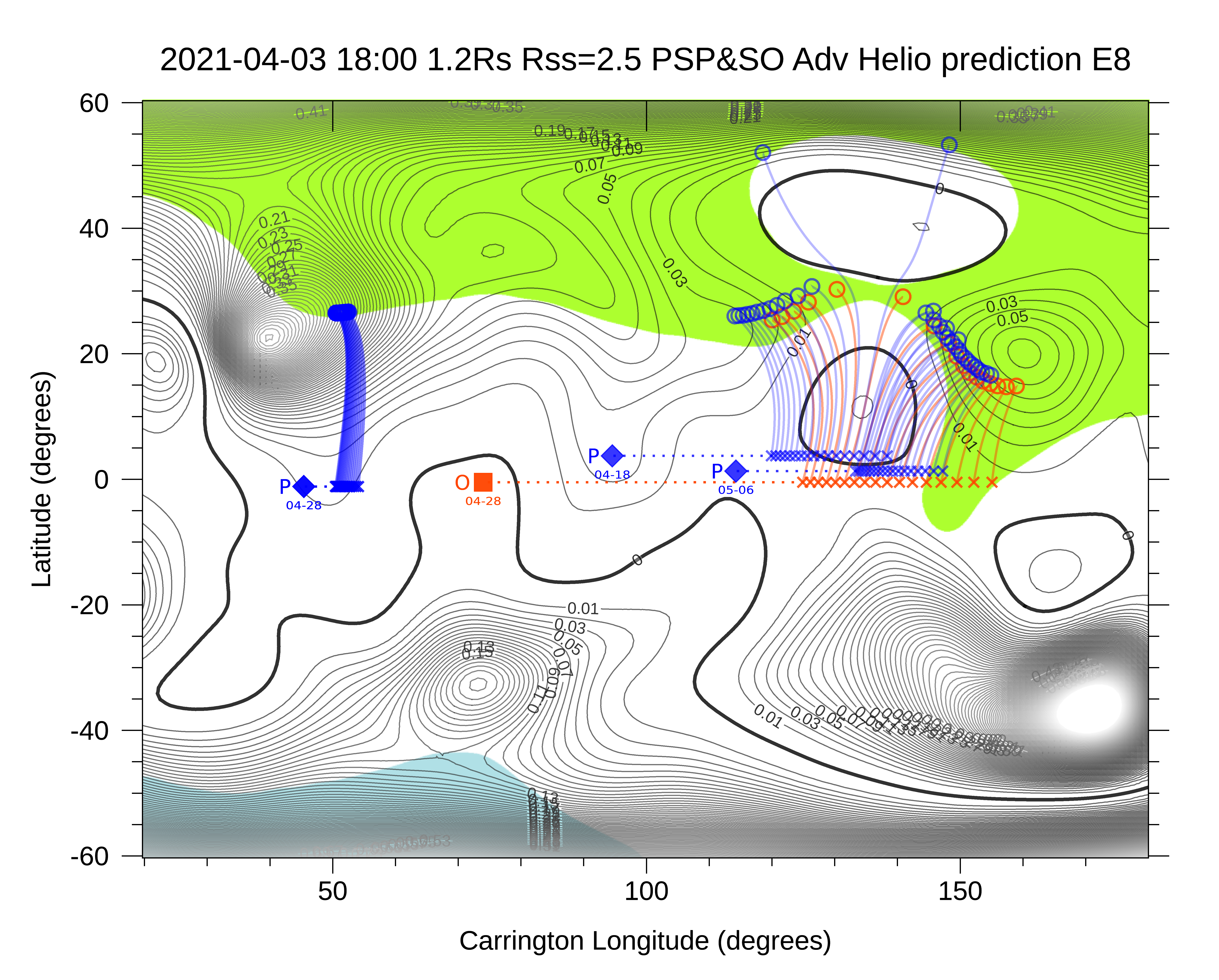
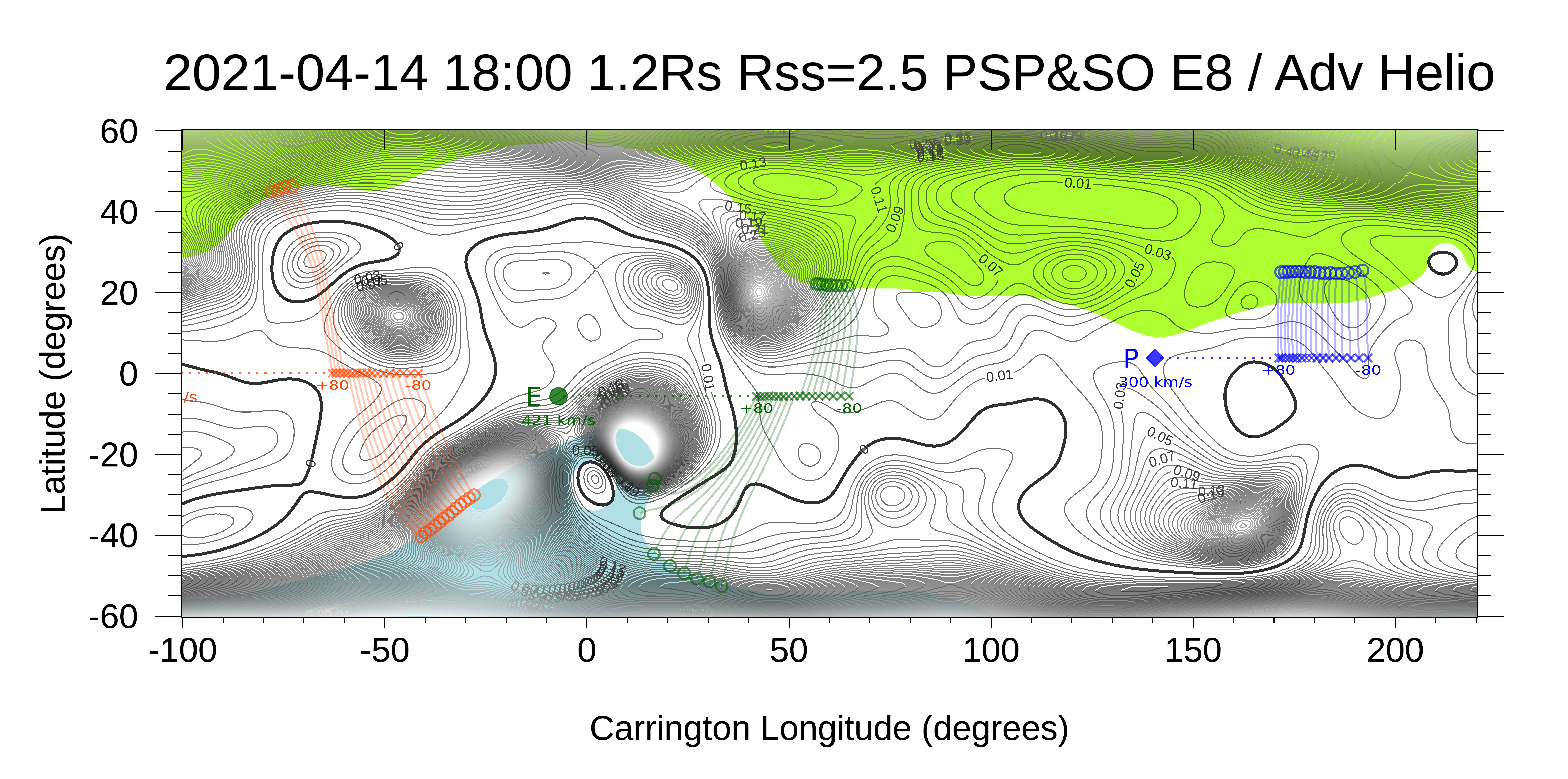
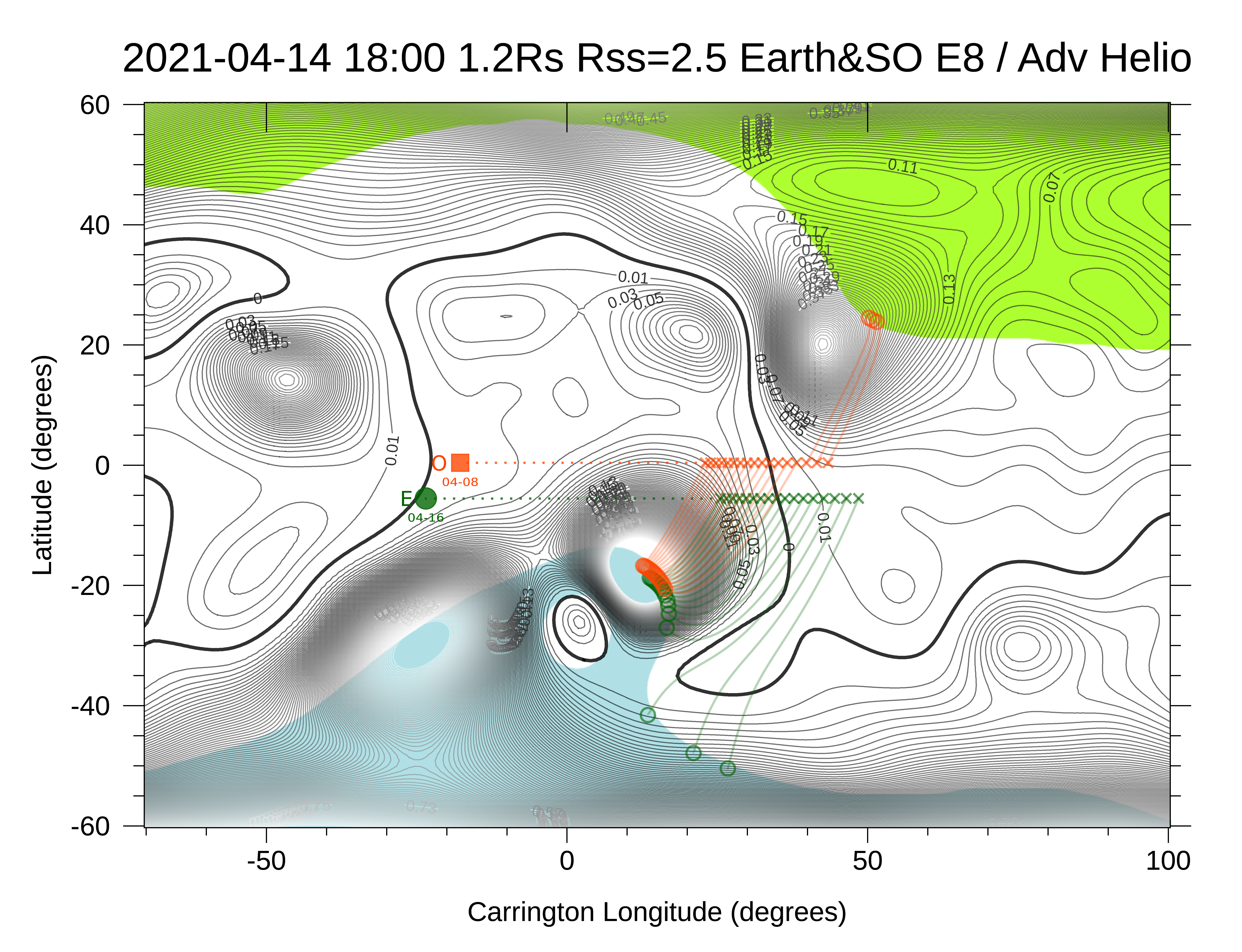
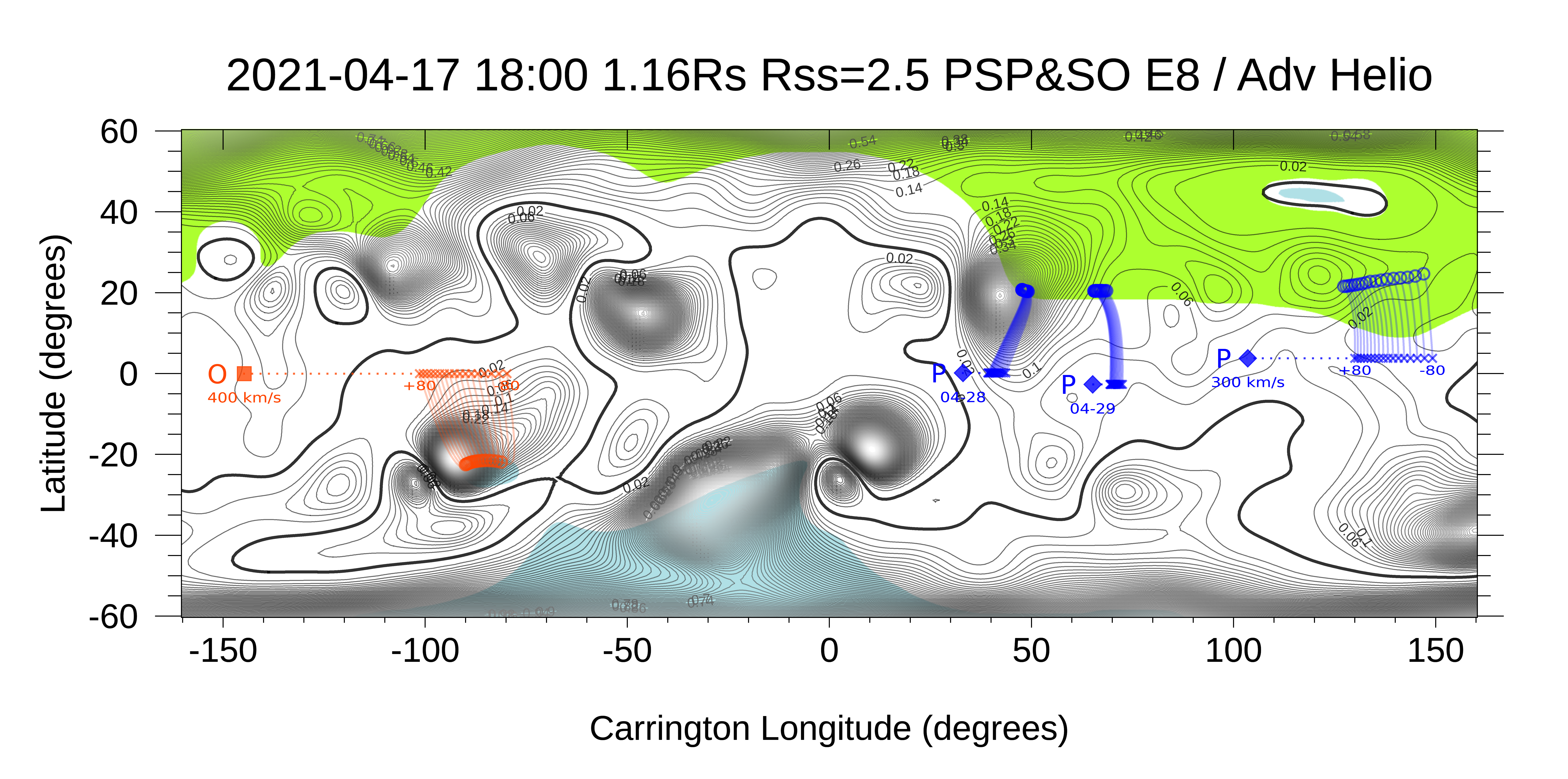
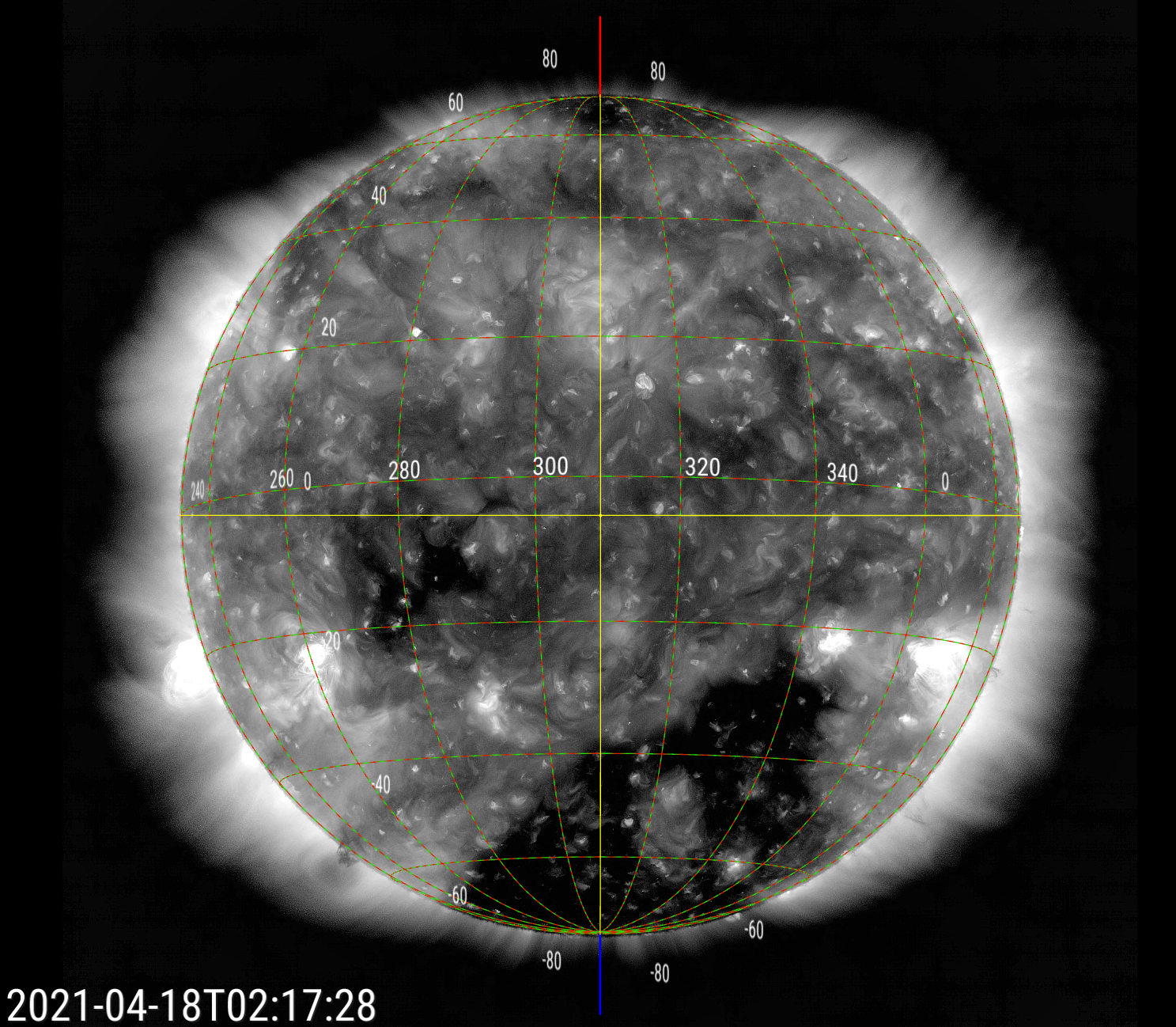
Notations in figures
- Source maps and mission magnetic connectivity: PFSS magnetic pressure contour maps and solar wind magnetic foot-points along the PSP, Solar Orbiter and Earth trajectories for the time shown under the symbols or at the top of figures.
- The projection of a mission location - PSP (blue diamond), Solar Orbiter (orange square), Earth (green circle) on the source surface (blue, orange, green crosses) and down to the solar wind source region (blue, orange, green circles) calculated for the height R = 1.2Rs and measured (or predicted) in situ solar wind speed ± 80 km s−1 .
- Open magnetic field regions shown in blue (negative) and yellow-green (positive), the neutral line is in black bold.
About our modeling
We use the PFSS model developed by Schrijver & De Rosa (2003). For further details see Section 2 in Panasenco et al. (2020).
